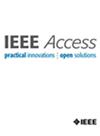FetalMovNet: A Novel Deep Learning Model Based on Attention Mechanism for Fetal Movement Classification in US
IF 3.4
3区 计算机科学
Q2 COMPUTER SCIENCE, INFORMATION SYSTEMS
引用次数: 0
Abstract
Automated classification of fetal movements in ultrasound (US) videos is critical for assessing fetal well-being and detecting potential complications during pregnancy. This study introduces FetalMovNet, a novel deep learning model that incorporates an attention mechanism to improve the classification of fetal movement in US video sequences. The model integrates convolutional neural networks (CNN) for feature extraction and an attention mechanism to capture spatio-temporal patterns, significantly improving classification performance of fetal movements. To evaluate FetalMovNet, we construct a new dataset containing fetal movements in US across seven different anatomical structures-head, body, arm, hand, heart, leg, and foot. Experimental results show that FetalMovNet achieves an accuracy of 0.9887, precision of 0.9871, recall of 0.9910, and an F1-score of 0.9891, outperforming state-of-the-art CNN and CNN-LSTM architectures. Ablation studies confirm the effectiveness of the attention mechanism, with FetalMovNet achieving an area under curve (AUC) score of 0.9957, compared to 0.9471 for CNN and 0.9543 for CNN-LSTM. The proposed FetalMovNet model provides a robust and clinically applicable tool for real-time fetal movement monitoring, reducing the need for manual assessment and improving prenatal care.求助全文
约1分钟内获得全文
求助全文
来源期刊

IEEE Access
COMPUTER SCIENCE, INFORMATION SYSTEMSENGIN-ENGINEERING, ELECTRICAL & ELECTRONIC
CiteScore
9.80
自引率
7.70%
发文量
6673
审稿时长
6 weeks
期刊介绍:
IEEE Access® is a multidisciplinary, open access (OA), applications-oriented, all-electronic archival journal that continuously presents the results of original research or development across all of IEEE''s fields of interest.
IEEE Access will publish articles that are of high interest to readers, original, technically correct, and clearly presented. Supported by author publication charges (APC), its hallmarks are a rapid peer review and publication process with open access to all readers. Unlike IEEE''s traditional Transactions or Journals, reviews are "binary", in that reviewers will either Accept or Reject an article in the form it is submitted in order to achieve rapid turnaround. Especially encouraged are submissions on:
Multidisciplinary topics, or applications-oriented articles and negative results that do not fit within the scope of IEEE''s traditional journals.
Practical articles discussing new experiments or measurement techniques, interesting solutions to engineering.
Development of new or improved fabrication or manufacturing techniques.
Reviews or survey articles of new or evolving fields oriented to assist others in understanding the new area.
 求助内容:
求助内容: 应助结果提醒方式:
应助结果提醒方式:


